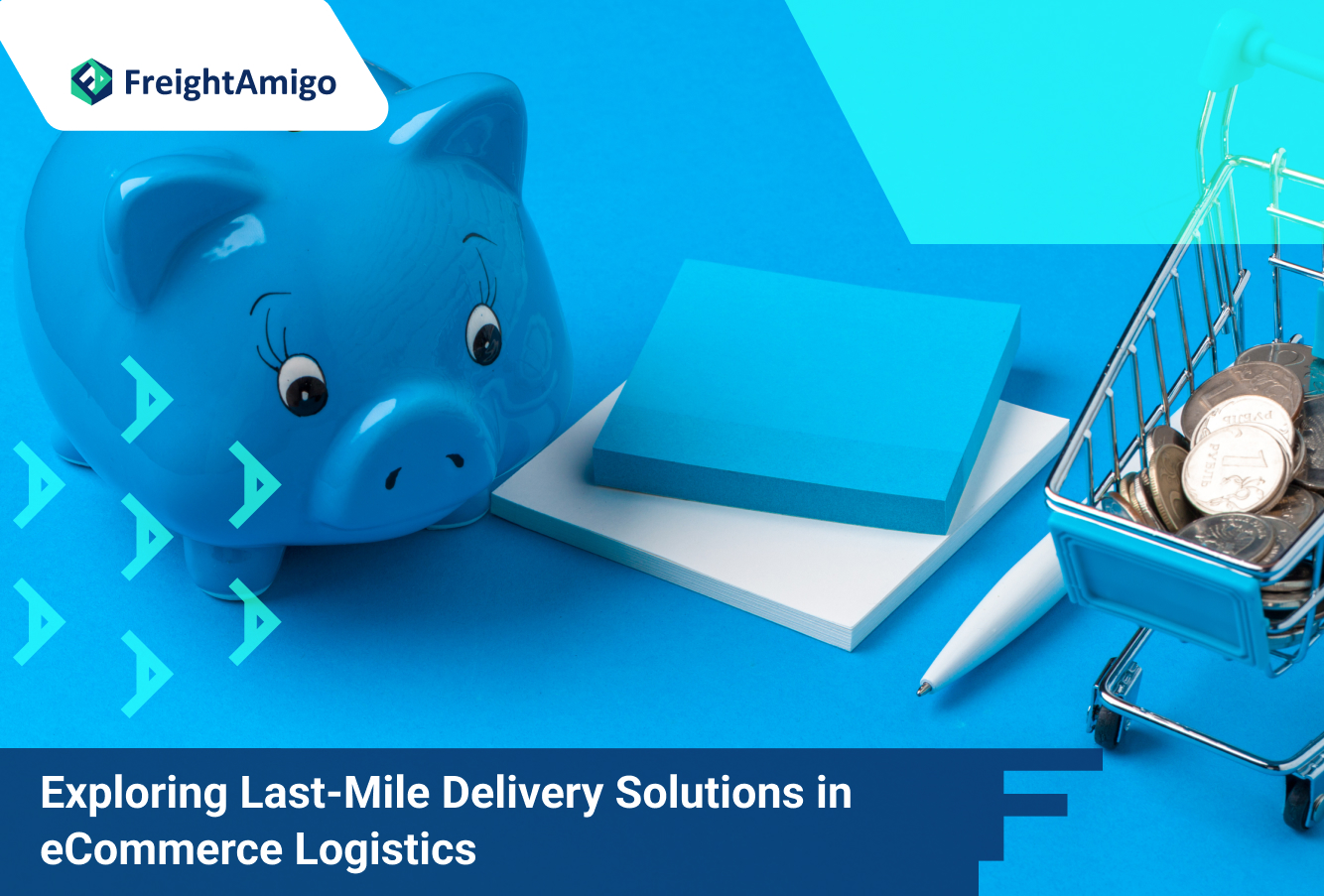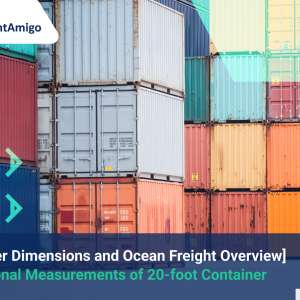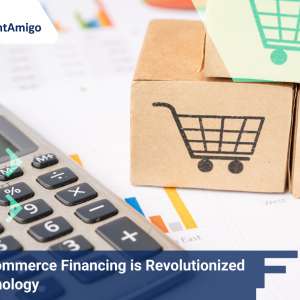Author Name: Tiffany Lee – Marketing Analyst at FreightAmigo
In the rapidly expanding world of ecommerce, the effectiveness of logistics, especially the last mile ecommerce delivery, has become a crucial determinant of success. This final step in the delivery process, where goods move from a transportation hub to the final delivery destination, not only significantly impacts customer satisfaction but also influences the operational costs for businesses. The importance of optimizing this segment can hardly be overstressed, as it directly correlates with the overall efficiency and sustainability of ecommerce operations. Faced with the dual challenges of meeting customer expectations and minimizing costs, we recognize the escalating need for innovative solutions in last mile ecommerce logistics.
Our exploration will take us through the various challenges inherent in last mile delivery within the ecommerce sector, ranging from high delivery costs to the complexities of urban logistics. We will delve into innovative last mile delivery solutions that have emerged in response to these challenges, examining how technology and logistics strategies are being harnessed to enhance delivery efficiency. Furthermore, we’ll highlight the myriad benefits that optimizing last mile delivery can bring to ecommerce businesses, including improved customer satisfaction, reduced environmental impact, and enhanced operational efficiencies. Through this analysis, we aim to provide valuable insights into how businesses can reinforce their logistics framework, ensuring a seamless and efficient delivery process that meets the modern consumer’s expectations.
Want To Compare The Best Express, Air Freight, Sea Freight, Rail Freight & Trucking Rates So As To Have Better Control On Cost?
Challenges of Last-Mile Delivery in E-commerce
Urban Congestion and Inefficiencies
- Traffic Delays and Increased Operational Costs: Urban areas, characterized by high vehicle density and inadequate road infrastructure, significantly extend delivery times. The slower speeds not only increase fuel consumption but also operational expenses, leading to missed deadlines and decreased delivery effectiveness.
- Inefficient Route Planning: The complexity of delivering multiple single items to dispersed locations exacerbates routing inefficiencies. Poorly planned delivery routes increase delivery times and mileage, further straining last-mile operations.
Geographic and Infrastructural Limitations
- Rural Delivery Challenges: Delivering to isolated or poorly connected rural areas presents significant logistical hurdles. Inaccessibility leads to delayed or failed deliveries, impacting customer satisfaction and increasing costs.
- High Dependency on Manual Processes: Traditional last-mile delivery often relies heavily on manual intervention, which can fail to meet dynamic consumer expectations. This lack of flexibility in modifying delivery schedules or locations hampers efficiency.
Cost Implications
- High Proportion of Delivery Costs: Last-mile delivery costs constitute a substantial portion of total delivery expenses, often ranging from 40–50%. These costs are driven by the need for extensive infrastructure to manage timely and cost-effective deliveries.
- Impact of Peak Demand Periods: During holidays and special events, a surge in demand puts additional pressure on delivery resources, leading to delays and overworked staff. This not only inflates operational costs but also affects service quality.
Customer Experience Challenges
- Poor Customer Communication and Service: A lack of proactive communication regarding order status and delivery details can lead to customer frustration and attrition. Failed first-time deliveries necessitate additional costs and logistical efforts to reschedule.
- Handling and Packaging Issues: The focus on rapid delivery often leads to mishandling, resulting in damaged goods. This not only incurs additional costs but also diminishes customer satisfaction, impacting brand reputation.
By addressing these challenges, businesses can enhance their last-mile delivery operations, improving both cost efficiency and customer satisfaction.
Innovative Last-Mile Delivery Solutions
In our pursuit to address the challenges of last-mile delivery in ecommerce, we have identified several innovative solutions that are reshaping the logistics landscape. These advancements not only optimize the delivery process but also enhance customer satisfaction and reduce environmental impact.
1. Tech-Driven Efficiency
The integration of technology such as route optimization software and real-time tracking systems has significantly improved the efficiency of last-mile deliveries. These tools enable precise planning and execution, ensuring that goods are delivered in the most timely and cost-effective manner.
2. Automation and Robotics
By automating repetitive tasks in warehouse operations and employing robotics for deliveries, companies can achieve higher efficiency levels. Autonomous vehicles, for instance, offer a promising solution for faster and more cost-effective deliveries.
3. IoT for Enhanced Visibility
The deployment of Internet of Things (IoT) devices across vehicles and packages provides real-time data on various parameters, offering unprecedented visibility into the supply chain. This allows for better decision-making and control over deliveries.
4. Customer-Centric Innovations
Adopting customer-centric solutions, such as flexible delivery windows and easy rescheduling options, significantly boosts customer satisfaction. Real-time tracking features offer customers a sense of control and transparency, fostering loyalty and repeat business.
5. Data-Driven Optimization
Utilizing data analytics to understand customer preferences and behavior helps in optimizing delivery routes and suggesting convenient pick-up locations. This ensures a personalized and seamless delivery experience for each customer.
6. Sustainable Solutions
The rise of eco-friendly delivery methods, including the use of electric vehicles and sustainable packaging, aligns with environmental values while potentially reducing costs and enhancing brand reputation.
7. The Future with Drones and AVs
Innovations such as drone delivery and autonomous vehicles hold the potential to revolutionize last-mile logistics, offering swift delivery options for urban and remote areas alike.
8. Smart City Integration
As cities become smarter, last-mile delivery routes will be increasingly optimized through the use of sensor networks and traffic management systems. This will enable logistics companies to minimize delivery times and adapt to real-time conditions.
By embracing these innovative last-mile delivery solutions, ecommerce businesses can transform the final leg of the delivery journey into a competitive advantage. These advancements not only address the current challenges but also pave the way for a more efficient, sustainable, and customer-focused future in ecommerce logistics.
Benefits of Optimizing Last-Mile Delivery
Optimizing last-mile delivery offers substantial benefits that directly impact customer satisfaction and operational efficiency. Here’s a closer look at these advantages:
Quick and Efficient Deliveries
Studies indicate that fast and efficient deliveries are top priorities for shoppers, often outweighing product pricing. By enhancing last-mile delivery, online retailers can leverage this area to attract and retain customers, ensuring they meet consumer expectations for speed and reliability.
Enhanced Visibility and Communication
Advanced last-mile solutions improve visibility for both consumers and fleet managers, enabling real-time package tracking and updates. This transparency allows customers to monitor their orders through mobile devices, enhancing trust and satisfaction. Additionally, direct communication lines between dispatchers, drivers, and customers facilitate special delivery instructions, further personalizing the delivery process.
Cost Reduction
Optimizing last-mile delivery can significantly reduce the costs associated with this phase, which often represents a large chunk of total delivery expenses. Efficient routing, automated platforms, and innovative logistics software minimize operational costs while maintaining service quality, thereby boosting overall profitability.
Customer Satisfaction and Loyalty
The ability to provide timely updates and maintain the quality of delivered goods plays a crucial role in customer satisfaction. Real-time tracking and flexible delivery options not only meet but exceed customer expectations, leading to higher retention rates and positive brand perception.
Sustainability and Innovation
Adopting green logistics solutions, such as electric vehicles and sustainable packaging, reduces environmental impact and aligns with consumer values. Furthermore, integrating technologies like autonomous vehicles and smart locker systems reflects an innovative approach that can set a business apart in a competitive market.
Improved Flexibility and Efficiency
Technology-driven last-mile delivery allows for dynamic routing adjustments in response to external factors like traffic, which enhances delivery efficiency. This flexibility ensures that customers receive their packages on time, even under challenging conditions, solidifying a company’s reputation for reliability and responsiveness.
By focusing on these key benefits, ecommerce businesses can transform last-mile delivery from a logistical challenge into a strategic advantage, fostering customer loyalty and driving growth.
Conclusion
Through our comprehensive exploration of last-mile delivery in the ecommerce logistics landscape, we’ve unveiled the multifaceted challenges businesses face, ranging from urban congestion to cost implications, and highlighted innovative solutions that promise not only to address these challenges but also to reshape the future of delivery services. By integrating technology such as real-time tracking, automation, and data analytics, companies can enhance efficiency, reduce costs, and ultimately deliver a more satisfying customer experience. These efforts, coupled with sustainable practices, reflect a forward-thinking approach that aligns with consumer expectations and environmental responsibilities.
In reflecting on the insights gathered, it’s evident that optimizing last-mile delivery is not just a logistical necessity but a strategic opportunity for ecommerce businesses to differentiate themselves in a competitive marketplace. The potential to improve customer satisfaction, reduce environmental impact, and achieve operational excellence underscores the critical importance of this segment of the supply chain. As the ecommerce sector continues to evolve, the adoption of innovative last-mile delivery solutions will undoubtedly play a pivotal role in shaping the successes of tomorrow’s online retail landscape. Thus, businesses that proactively embrace these innovations, focusing on efficiency and customer-centricity, will be well-positioned to lead and thrive in the dynamic world of ecommerce logistics.
There Are Different Options For Cargo Transportation. If You Want To Choose The Most Convenient And Suitable Solution, It Is Best To Have The Full Support Of Logistics Experts! If You Are Planning To Ship Goods Overseas, Please Go To The FreightAmigo Page For Inquiries.
===
Read More:
【Cosmetic Product Recycling】 A Guide to Sustainable Reverse Logistics
【Rise of Green Supply Chain】 Pioneering Sustainable Practices in Logistics
【ESG in Logistics】 How ESG Practices Drive Social Responsibility in Logistics
===
If you have any inquiries on logistics/supply chain, feel free to contact FreightAmigo now:
Chat with us online OR
Phone : +852 28121686
WhatsApp: +852 27467829









































